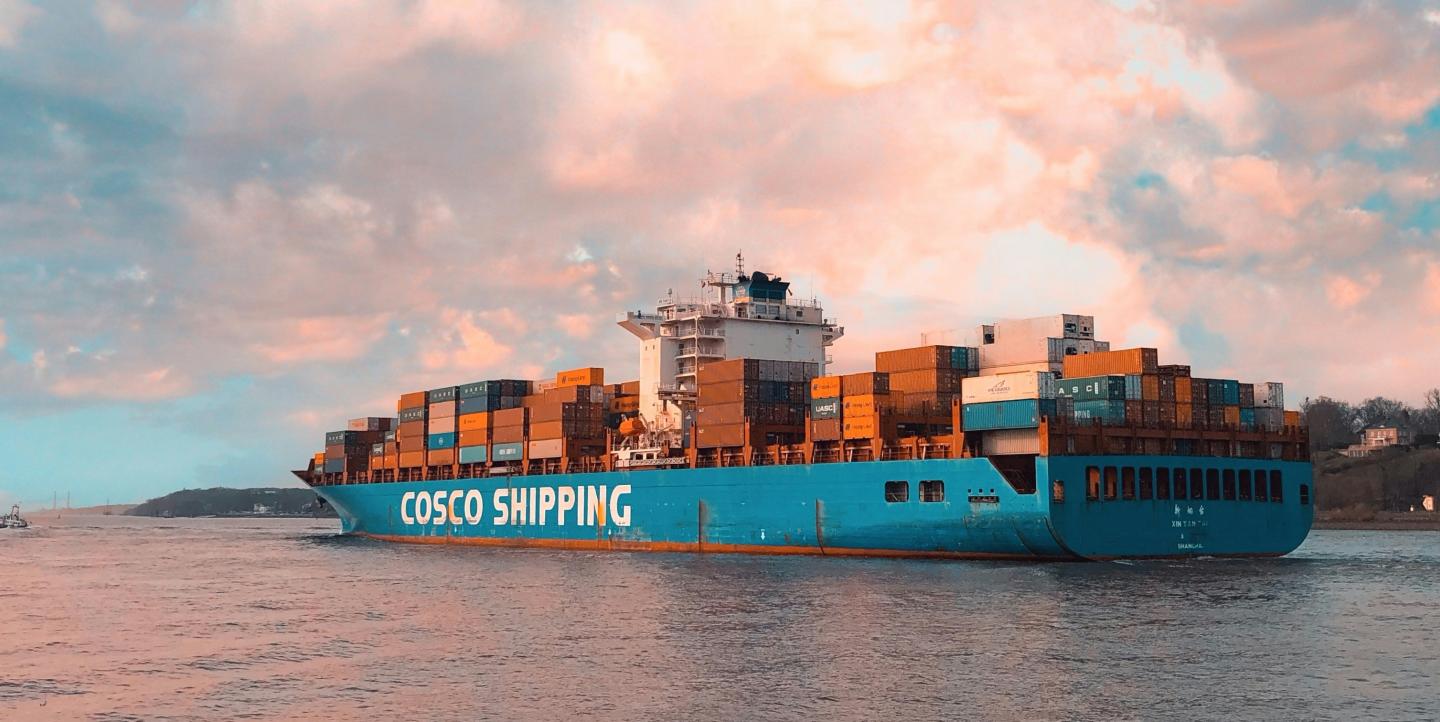For most of human history, governments have taxed goods crossing their borders. Tariffs — taxes levied on imports or exports — have financed empires, protected domestic industries, and punished foreign rivals. They’ve sparked wars, crashed economies, and redefined alliances.
Yet today’s tariff war between the United States and the world doesn’t fit neatly into any of the old molds. Rather than being a tool to nurture domestic industry or fill government coffers, tariffs are now being wielded as weapons in a sprawling contest over global power and economic dominance.
"We are seeing an upending of the whole economic order," said Robert Blecker, an American University economist, "and the rules-based trading system that has been in effect since 1945." In its place, he told Global Business Journalism students at Tsinghua University, is "a Hobbesian war of all against all," referring to the 17th century English social and political philosopher who wrote that people are inherently selfish.
With U.S. President Donald Trump aiming at China as the top target in his massive global tariff offensive, the stakes have grown even higher — signaling a deepening rift that could reshape the global economy for decades. "China must fail — Trump knows this," pro-Trump influencer Benny Johnson tweeted to his 3.7 million followers on April 10. "This is more than just a trade war."
Trump began his sprawling trade wars as soon as he took office on January 20 by targeting hemispheric allies Mexico and Canada. He took his tariff wars global on April 2 — a date he dubbed "Liberation Day" — with massive levies on dozens of jurisdictions, including some uninhabited islands. After backing down temporarily following a sharp dive in American and global stock markets, Trump restarted his tariff push in early July with daily social media missives targeting trading partners that had incurred his wrath, from Brazil to the European Union, Mexico to Myanmar. The mercurial president’s reasons ranged far beyond traditional economic excuses for tariffs. For example, he threatened Brazil for prosecuting his close friend, former president Jair Bolsonaro, for staging a failed coup in an attempt to maintain power after losing a reelection race.
Trump believes that his threats will convince nations around the world to line up to follow the U.K. and Vietnam to negotiate trade pacts on terms favorable to the American administration. But most economists, historians and foreign policy experts instead predict more economic chaos.
"Under Trump’s stewardship, American trade diplomacy has ceased to be a tool of engagement and become a weapon of spectacle," international affairs analyst Imran Khalid wrote recently in The Hill.
As much as Trump's actions may please his strongest supporters at home, many nonpartisan analysts say the passions unleashed by the American president's on-again, off-again tariffs — which have increased global trade levies to their highest levels in a century — jeopardize the stability of the world's economy.
“The [Trump] administration is playing with fire,” said Joe Brusuelas, chief economist at RSM.
From Mesopotamia to McKinley: A brief history of tariffs
To understand why Trump's tariff obsession is historically unusual, we first have to understand how tariffs evolved.
Start with this historical anomaly: Trump is the first leader of a state to use tariffs to destabilize the global economy or create economic chaos as a political strategy. Let's go to the history books...
Tariffs — taxes on imported goods — have been around as long as nations have traded. The earliest tariffs were essentially tolls. In ancient Mesopotamia, merchants moving goods through city-states paid taxes at gates and ports. Ancient Athens imposed customs duties on goods entering its harbors; medieval European towns taxed merchants entering city gates. Small kingdoms collected duties at rivers and bridges, not out of economic strategy but because those rulers needed revenue.
Mercantilism, the dominant economic philosophy from the 16th to 18th centuries, gave tariffs a political purpose. Under mercantilist thinking, national wealth was measured by the accumulation of gold and silver. Exporting goods brought money in; importing drained it. Thus, heavy tariffs on imports became common.
One example is Britain’s Navigation Acts of the 17th century. To enrich itself and weaken rivals, Britain required that goods imported to its colonies come via British ships — often with tariffs that discouraged buying from foreign competitors.
Tariffs: American policy tool
Tariffs were also key to early American economic development. After independence, the U.S. — lacking an income tax — used tariffs as its primary revenue source. As Alexander Hamilton, the country’s first Treasury Secretary, argued in his 1791 "Report on Manufactures," tariffs could protect the fledgling American industry from dominant British manufacturers.
"In countries where there is great private wealth, the public revenue may be derived, in a considerable degree, from it," Hamilton wrote. "But in a country where there is little capital, taxes on consumption […] are more convenient."
Tariffs are often embraced by politicians, but they are widely despised by free-market capitalists. Adam Smith, in his 1776 classic "The Wealth of Nations," wrote that tariffs foster economic inefficiency and complacency among protected industries. Two centuries later, Nobel Prize-winning economist Milton Friedman complained that "tariffs protect a few producers at the expense of a much larger number of consumers.”
In the decades leading up to the American Civil War, tariffs became a political flashpoint. The so-called "Tariff of Abominations" of 1828, which sharply raised duties on raw materials and manufactured goods, enraged Southern politicians and business elites, who saw themselves as victims of Northern industrial power. It triggered the Nullification Crisis, a constitutional confrontation over states' rights between South Carolina and the federal government.
Abraham Lincoln's Republican Party platform in 1860 was explicitly protectionist, and he argued that tariffs "secure to the American laborer the full rewards of his industry." Lincoln reflected the world mindset. Globally, tariff walls defined commerce until well into the 20th century. Many nations used tariffs to promote "infant industries," a concept formalized by German economist Friedrich List in the 1840s. Protection, he argued, was necessary to allow industries in developing nations to catch up with more advanced economies.
Donald Trump's historical hero, William McKinley, created a tariff war in 1890 with neighbor Canada and Europe by writing a law as an Ohio congressman raising tariffs to 50% at the behest of American "robber baron" industrialists. The ensuing economic depression and political backlash cost Republicans 93 House seats and the White House in the 1892 mid-term elections. As president four years later, McKinley found a new use for tariff revenue: to fund a war with Spain that created a nascent American Empire from Puerto Rico to the Philippines.
Toward freer trade
In the U.S., the creation of the income tax in 1913 ended the need for tariff revenue to fund federal government spending. But as the world spiraled into the Great Depression in 1930, President Herbert Hoover signed into law the infamous Smoot-Hawley Tariff Act, which raised U.S. tariffs on more than 20,000 goods, prompting retaliatory tariffs from other countries and a global collapse in trade. Tariffs were blamed for deepening the worldwide depression and abetting the rise of fascism. After the devastation of World War II, the world shifted toward lower trade barriers and fewer tariffs.
In the post-war world, nations established a new trade order. The General Agreement on Tariffs and Trade (often shortened to GATT), signed in 1947, sought to gradually reduce tariffs and other barriers. Over the next decades, through successive "rounds" of GATT negotiations, tariffs fell dramatically among developed nations. In the United States, average tariffs fell from about 20% in the 1930s to less than 5% by the 1990s. Globally, the pattern was similar. Trade exploded, and prosperity (though unevenly) followed.
This period of liberalization culminated in the creation of the World Trade Organization in 1995, giving the world its first comprehensive, enforceable set of trade rules. Tariffs trended downward, global trade trended upward, and extreme poverty dropped significantly around the world. Benefits to the new world order were widespread, but there were many losers, particularly in wealthier countries like the U.S. and stagnant nations like Russia, where manufacturing facilities shuttered or shifted to other places.
China’s story fit neatly into this narrative — for a while. After decades of isolation, Beijing joined the WTO in 2001, promising reforms in exchange for access to global markets. U.S. leaders at the time believed that integrating China into the world trading system would encourage political liberalization and bind it to international norms. China's economic system liberalized, to some degree, but its political system did not.
U.S. consumers benefited from the influx of inexpensive Chinese-produced goods, from toys to toasters, sneakers to solar panels. At the same time, American political leaders in both parties accused China of ignoring international trade rules, breaking bilateral agreements to open markets to American products and services, violating human rights, and stealing intellectual property. China accused the U.S. of bullying and interference in its domestic affairs.
The beginning of the end of the globalization era came with Trump’s election in 2016. He opened a trade war with China in 2018 by imposing $350 billion of tariffs on Chinese goods. China retaliated with tariffs of its own, matching U.S. tariffs almost dollar for dollar. Suddenly, two of the world’s largest economies were locked in a tit-for-tat spiral that affected industries from agriculture to technology.
The election of a Democratic president in 2020 did little to change the trajectory of de-globalization. Joe Biden maintained many of Trump’s tariffs and added new ones on electric vehicles and solar cells. Then Trump returned to office in 2025, declaring that “tariffs” was his favorite word. He wasn’t joking.
Compared to past tariff disputes, like the Smoot-Hawley Tariff in 1930 or the U.S.-Japan tensions of the 1980s, the current situation is far more expansive, far more ideologically charged, and more deeply entwined with military and strategic concerns.
In the 1930s, tariffs were mainly about protectionism amid a global depression. In the 1980s, disputes with Japan focused on market access, with eventual negotiated settlements. Today, tariffs are instruments in a struggle over who controls the technologies and supply chains of the 21st century. They are also a blunt instrument used to wield power by one man — Donald Trump — who maintains grievances against nations for reasons personal, economic, ephemeral and tactical.
Whether Trump succeeds, and how the world reacts to his threats, will write the next chapter of this history.
This piece was produced in collaboration with the Global Business Journalism program at Tsinghua University. The program is a partnership between ICFJ, Tsinghua University and Bloomberg News.
Photo by Andreas Dittberner on Unsplash.


